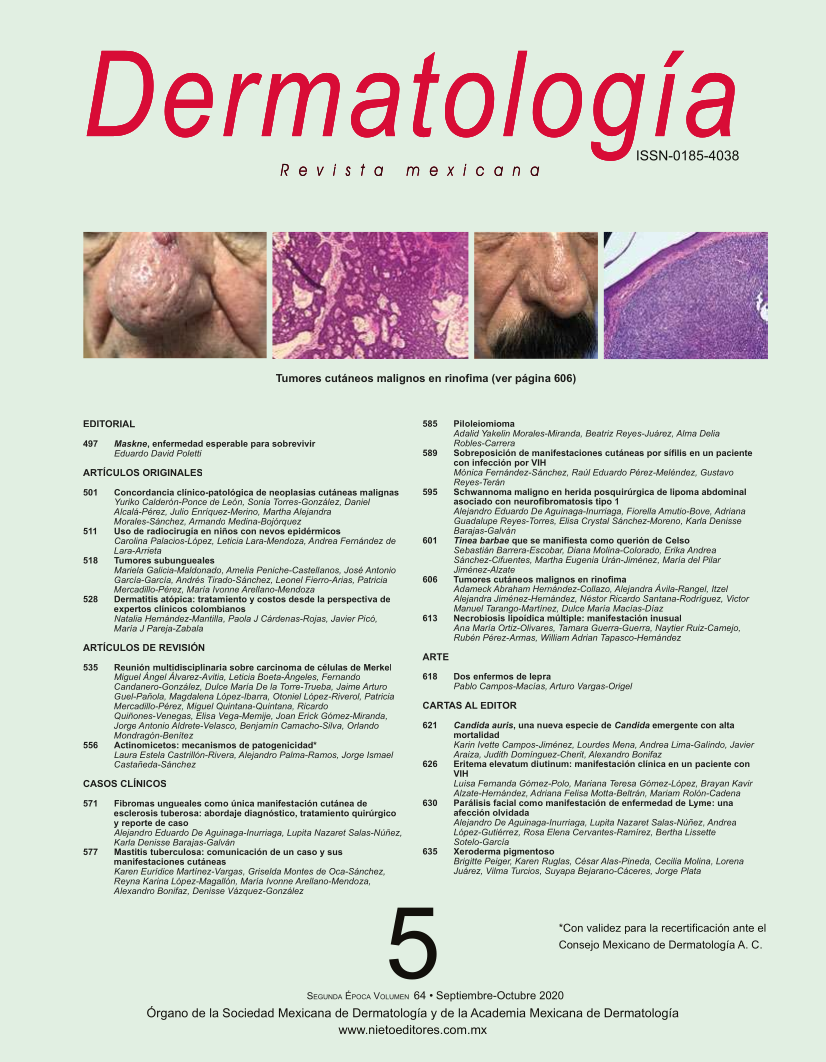Syphilitic skin manifestations overlap in an HIV-infected patient.
Dermatol Rev Mex. 2020; 64 (5): 589-594.
Mónica Fernández-Sánchez, Raúl Eduardo Pérez-Meléndez, Gustavo Reyes-Terán
Departamento de Investigación en Enfermedades Infecciosas, Instituto Nacional de Enfermedades Respiratorias, Ciudad de México.
Resumen
ANTECEDENTES: La sífilis tiene gran variedad de manifestaciones en los pacientes con infección por VIH. Históricamente, la infección se divide en tres fases clínicas bien descritas; sin embargo, existen reportes de sobreposición de estas fases en pacientes con esta coinfección. El mecanismo de sobreposición no está bien dilucidado, pero existen teorías, como la persistencia del chancro primario y la evolución rápida de la infección a fases tardías.
CASO CLÍNICO: Paciente masculino de 36 años con infección por VIH, ingresado a nuestro servicio de infectología debido a infección ocular por Treponema pallidum con una variedad de manifestaciones mucocutáneas correspondientes a sífilis primaria y secundaria.
CONCLUSIONES: La gran variabilidad clínica de la sífilis representa un reto en su diagnóstico y obliga a hacer un abordaje completo en el paciente con sospecha de padecerla, lo que es especialmente importante en el paciente con VIH debido a los reportes de un curso más rápido y agresivo en esta coinfección.
PALABRAS CLAVE: Sífilis; VIH; coinfección; alopecia.
Abstract
BACKGROUND: Syphilis has a wide variety of manifestations in HIV-infected patients. Typically, the infection is divided in three well-described clinical stages; however, there are reports of stage overlapping in patients with this coinfection. The mechanism of this overlap has not been well described, but there are theories which include the persistence of the primary chancre and a fast progression to latter stages.
CLINICAL CASE: A 36-year-old male patient with HIV infection, admitted to the infectology service because of Treponema pallidum ocular affection with a variety of mucocutaneous manifestations correspondent to primary and secondary syphilis.
CONCLUSIONS: The great clinical variability of syphilis represents a diagnostic challenge and makes to do a complete approach in the patients with suspicion of having it, which is specially important in the patient with HIV infection due to the reports of a faster and more aggressive course in this coinfection.
KEYWORDS: Syphilis; HIV; Coinfection; Alopecia.

